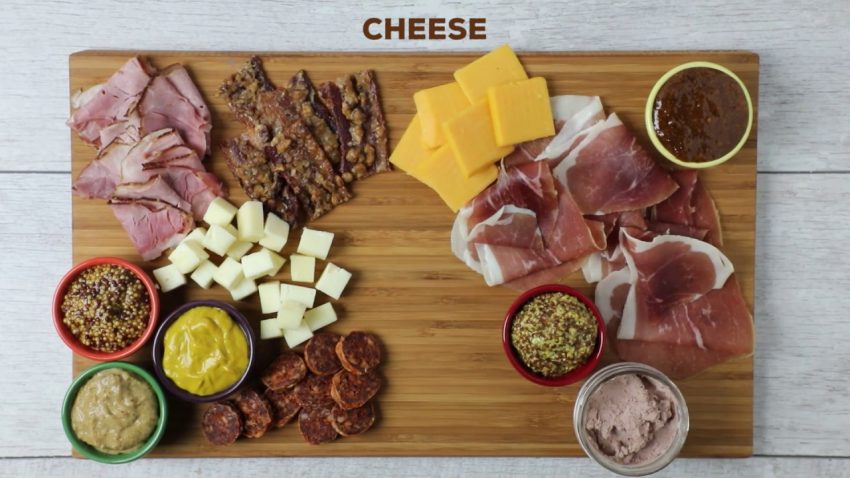Cheese, glorious cheese! A universal delight that transcends borders and cultures, cheese is more than just a humble dairy product. It’s a work of art, a science, and a testament to the culinary prowess of humankind. And what better way to celebrate the diversity of cheeses than by assembling a cheese board, a true feast for the senses? In this blog, we’ll explore the art of crafting the perfect cheese board, from selecting the right cheeses to complementing them with an array of delectable accompaniments.
Choosing the Cheeses
The heart and soul of any cheese board are, of course, the cheeses themselves. The key is to provide a variety of flavors, textures, and milk types to cater to different palates. Consider including the following types of cheese:
- Soft and Creamy: Options like Brie, Camembert, or a ripe goat cheese bring a luscious, melt-in-your-mouth quality to your board.
- Hard and Aged: Add depth and complexity with cheeses like Cheddar, Gouda, or Parmigiano-Reggiano. These options have a firm texture and a more concentrated flavor.
- Blue Cheese: For those who relish bold, intense flavors, include a blue cheese like Roquefort, Stilton, or Gorgonzola. These cheeses are known for their distinctive veining and sharp taste.
- Semi-Soft: Think of options like Havarti, Fontina, or a good quality Swiss cheese. They provide a balance between creamy and firm textures.
- Fresh Cheese: Incorporate a fresh cheese like mozzarella, burrata, or ricotta for a clean, mild contrast to the other cheeses.
Accompaniments
A well-constructed cheese board is not just about the cheeses themselves. It’s the carefully selected accompaniments that elevate the experience and provide a harmonious balance to the cheese’s flavors. Here are some ideas for accompaniments:
- Fruits: Fresh and dried fruits, such as grapes, figs, apples, and apricots, add sweetness and a refreshing contrast to the cheese.
- Nuts: Nuts like almonds, walnuts, and pecans provide a delightful crunch and pair wonderfully with various cheeses.
- Bread and Crackers: Offer an array of artisanal bread, breadsticks, and crackers. Opt for whole-grain varieties, baguette slices, or gluten-free options to cater to different dietary preferences.
- Honey and Jams: A drizzle of honey or a dollop of fruit preserves, like fig or apricot, can create a delightful sweet and savory combination.
- Charcuterie: Cured meats like prosciutto, salami, and chorizo offer a savory contrast to the cheese. They provide a salty, meaty element that complements the flavors.
- Pickles and Olives: Pickled vegetables, gherkins, and a variety of olives bring a tangy and briny component to the board.
Presentation
The visual appeal of your cheese board is just as important as its taste. Here are some tips on how to present your masterpiece:
- Platter Selection: Choose a beautiful wooden board, slate, or a marble platter as the base. The contrasting colors and textures make the cheeses pop.
- Arrangement: Start with the cheeses and place them evenly around the board. Add the accompaniments in small, artful groupings, considering both aesthetics and practicality.
- Labels: If you’re serving a selection of cheeses with varying flavors and origins, use small labels to identify each type.
- Garnish: Fresh herbs, edible flowers, or even a sprinkling of sea salt can be used to garnish the board and add a touch of elegance.
Conclusion
Crafting the perfect cheese board is a delightful culinary adventure. It’s a chance to indulge in your creative side while delighting your guests with a symphony of flavors and textures. Whether it’s an intimate gathering or a grand celebration, a well-constructed cheese board can be the highlight of your event, leaving a lasting impression on all those lucky enough to partake in the feast for the senses that is a carefully assembled cheese board. So, go ahead, explore the world of cheeses and let your imagination run wild as you create your cheese board masterpiece.
